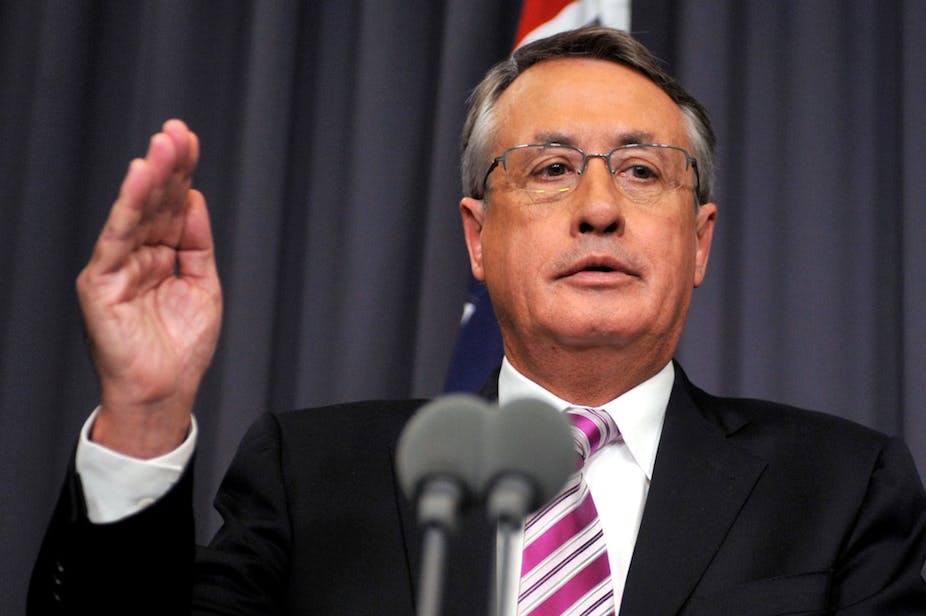Last Friday’s announcement that the Minerals Resources Rent Tax (MRRT) had brought in only $126 million in its first two quarters makes the Government’s initial assessment of a windfall $2 billion in its first year seem an unattainable goal.
Although Treasurer Wayne Swan has blamed falling commodity prices, the government is under pressure from the Greens and independent senators to alter the mining tax, with reports claiming its methodology is flawed.
So what factors have contributed to the much lower than expected income?
Firstly, the tax is calculated on profits (revenues net of expenditure) as declared by eligible mining companies. Profits for the first half of the year are taxed, net of royalties paid to the state governments, at an effective rate of 22.5%. An exemption is provided to companies whose net profits for all operations remain below $50 million.
But lower than expected profits for mining firms across the board has resulted in far less tax collected, through the MRRT, than originally predicted. Treasury’s Mid Year Economic Review, announced in October, forecast a $2 billion tax windfall in the MRRT’s first full financial year.
The Government blames falling iron ore prices in particular, which hit a low of $87 a tonne in September 2012 (before the Treasury calculations). Prices have since risen to above $150 a tonne, the price point at which PwC Australia has suggested the MRRT will begin to bring in taxation revenue. Unfortunately for the Gillard government analysts have predicted that prices will average $130 a tonne over 2013, thereby looking even less likely to lead to MMRT revenues from iron ore projects.
The persistently high Australian dollar has also been blamed - although this is disputable as the value of the Australian dollar is currently close to what it was at the time Treasury ran the numbers for the Mid Year Review (AUD/USD = 1.0306 on 22nd Oct 2012, currently AUD/USD = 1.0283).
A more likely contributor is the excessive charging of royalties by the states. Royalties are deducted from the profit miners make, prior to the calculation of the mining tax. Coalition state governments in particular are able to increase their tax revenues knowing this will reduce tax collected under the Labor Federal Government’s MRRT.
Despite calls from the Greens and independents, Trade Minister Craig Emerson says the government is not planning to change the design of the tax. But it has expressed its concerns about royalties.
Other significant factors in the failure of the tax to collect expected revenues involve the ability of firms to write off significant losses and capital expenditure (including accelerated mine depreciation allowable under the MRRT legislation) to reduce their taxable profit.
This is particularly convenient in the capital intensive mining industry where future investment can be brought forward. This, however, can’t go on forever it would be likely that the capital spend programs of the mining companies will diminish in future periods. We could see a likely run off of capex and depreciation claimed in the initial implementation period of the tax resulting in increased tax revenue over the second half of the year.
The larger problem remains the narrow design of the tax. The political pressure on the Gillard government (after the industry’s $20 million lobbying campaign discredited Kevin Rudd’s Resources Super Profits Tax and led to his axing as prime minister) meant the tax was limited to iron ore, coal and some gases at an effective rate of 22.5% instead of 40% – thereby increasing portfolio risk and reducing the tax base. (The design of the tax also failed to meet the recommendations of the Henry Review.) The tax base was further narrowed due to the exemptions of iron ore and coal companies with profits under $50 million.
The exclusion of gold from the tax is also a lost opportunity, as gold prices have continued to rise and 83% of our gold mines are foreign owned with profits heading overseas untouched by the MRRT.
So what to do? Even if the government wanted to change the design of the tax, it faces the formidable financial and legal resources of companies such as BHP, Rio Tinto and Xstrata, which were involved in the first redrafting.
As we saw with Rudd’s Super Profits Tax, if the outcome looks to be going the other way they can devote significant resources to a PR campaign against the government and the proposed tax.
The government could hope to see a continued rebound of iron ore prices above $150 per tonne - but a more likely scenario is the revisiting of the loophole which allows the states to increase royalties at the expense of the Federal Government.

